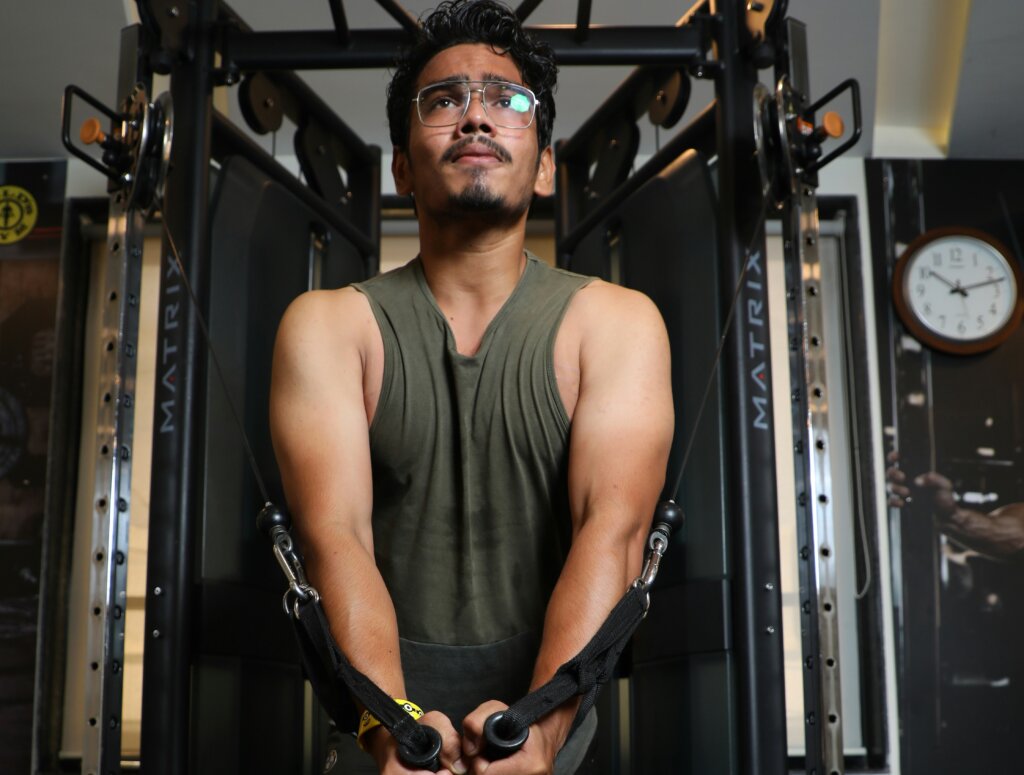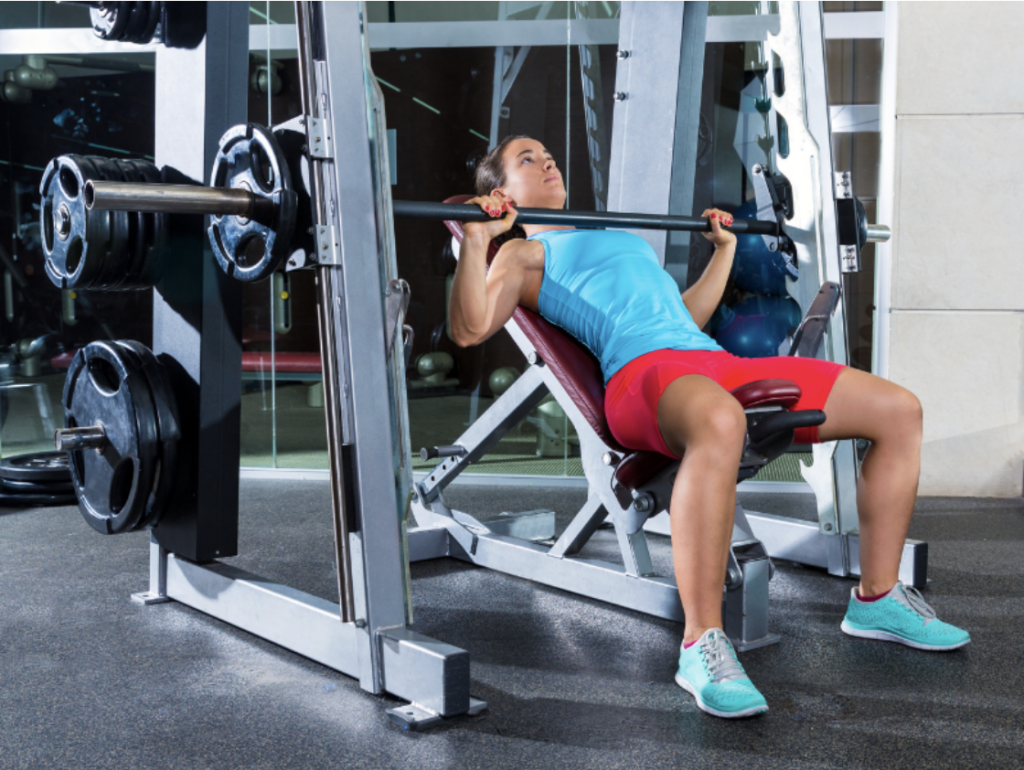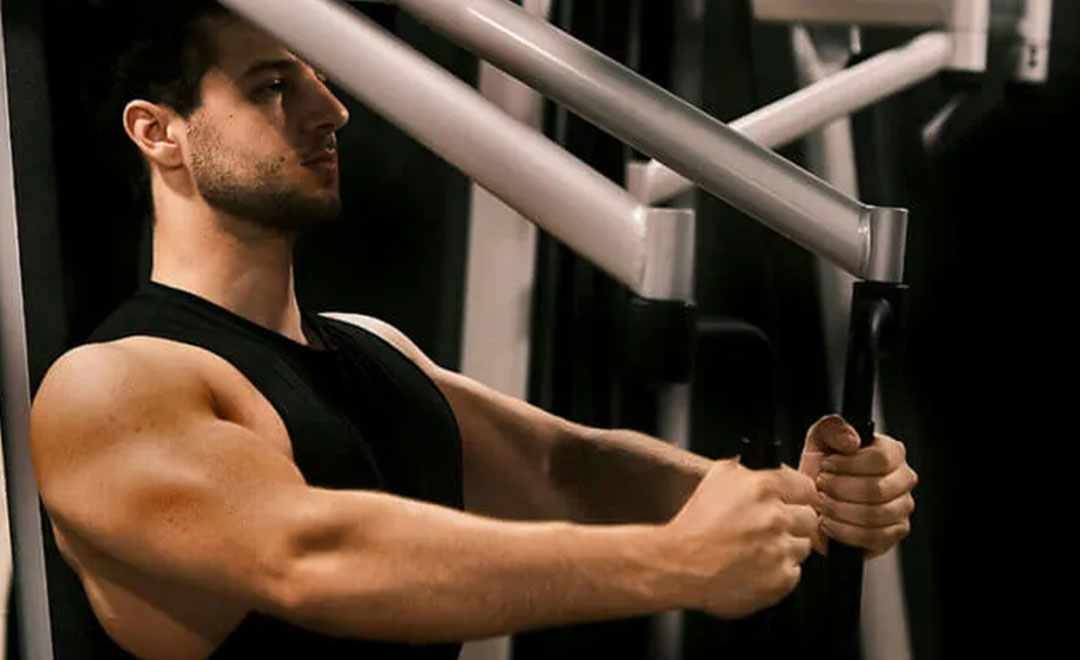Chest Machines and Workouts at the Gym
Learn what muscle groups to target and which machines to use.
It’s chest day at the gym and you have no clue how to pump up your pecs or strengthen your serratus anterior. Finding the right chest gym machine is a good start, but you also need to know how to use it to get the results you want.
Let’s review four chest machines at the gym, what they do, and how to use them to build a stronger chest.
Chest Press Machine

This machine comes in a few variations, including:
- Flat chest press machine (where you lie flat on your back to perform chest presses)
- Vertical chest press machine (where you’re in a vertical seated position)
- Inclined chest press machine (which targets the upper pecs)
- Declined chest press machine (which targets the lower pecs)
Some machines will also let you add weight plates for an extra challenge. Plate-loaded chest press machines are more customizable. You might also use this machine with a weight stack and pin system to adjust the resistance
Different machines call for different exercises. Here’s how you can use this machine to get a decent chest workout at the gym.
Chest Workout Routines with a Chest Press Machine
Let’s start with a simple movement that beginners can do with confidence.
- Using a vertical chest press machine, take a seat and grab the handles.
- Keep your wrists in a neutral position, with arms bent at a 90-degree angle and parallel to the floor.
- Exhale and press outward until your arms are fully extended, pause, then control your muscles as you return to the starting position on the inhale.
- That’s one rep; aim for several reps over 2-3 sets.
- For a little variation, try doing this same exercise using one arm at a time.
It’s a good idea to hold off using weight until you feel comfortable using the machine. The movements on flat, inclined, or declined chest press machines are similar, just in a different position.
There are tons of ways you can switch up your chest press machine exercises. Work with a Personal Trainer to learn how to get more from this do-it-all machine!
Cable Machine

Cable machines are exactly what they sound like. They use a series of pulleys and cables with varying resistance levels. You’ll pull these cables to build your chest and arm muscles. These machines give you more versatility compared to free weights and can help you isolate specific muscle groups.
Examples of chest workouts with a cable machine include:
- Cable chest presses
- Cable chest flies
- Cable crossovers
Each of these also has variations, giving you tons of ways to work out with just one piece of equipment.
Chest Workout Routines with a Cable Machine:
Let’s look at two ways you can do cable chest flies with one machine. First up, a flat cable chest fly.
- Add a flat bench in between the two pulleys, with the pulleys low enough for the handles to line up with your chest when lying down.
- Lie down on the bench with your feet planted on the floor, one on each side of the bench.
- Open your arms to either side of the bench, with each arm parallel to the floor and palms facing upward—this is your starting position.
- Grip the handles and exhale as you pull up to where your thumbs meet above your chest, then control the return to your starting position. That’s one rep.
- Aim for several reps per set, using enough weight to challenge you.
Increase the challenge with a crossover cable chest fly:
- Set the pulleys to waist height.
- Start with your feet slightly wider than shoulder width, then step forward with one leg.
- Grab each handle with a 90-degree bend in the arm (forearms should be parallel to the ground).
- Exhale and press your arms forward, crossing them over each other at the center.
- Alternate the wrist that’s on top as you cross over with each rep.
- Switch legs after each set to even things out.
Whether you prefer to stand or lie down, there are lots of ways you can use cables to work your chest muscles.
Butterfly Press

Don’t let its delicate name fool you! The butterfly press is a great way to work your pectorals, deltoids, and biceps. It uses an open-and-close movement, like the wings of a butterfly, to tone your upper body. You’ll recognize this machine by its upright seat and two “wings” with padded supports.
You might also hear people call this machine a “pec deck.” In fact, the American Council on Exercise ranked the “pec deck” as one of the most effective ways to build pectoral muscles. It gives you enough intensity and muscle isolation to target these muscles.
Chest Workout Routines with a Butterfly Press:
This workout is a great option for weight training beginners because the machine is easy to use. Here’s how:
- Sit with your back against the machine, feet on the ground.
- Grab the handles with your arms on the outside of the pads.
- Press inward toward the chest, then return to your starting position.
- Do this for several reps over 2-3 sets for the full benefit.
You can also mimic this movement with free weights if your gym doesn’t have a butterfly press.
Smith Machine

Part squat rack, part weight bench, the Smith machine is not the elaborate torture device it resembles. It’s actually a versatile piece of equipment that’s perfect for a chest workout at the gym.
Think of it as your gym’s fairy godmother: It provides stability and guidance during movements like chest presses. Plus, it has an adjustable safety stop to save you from those embarrassing oops-I-dropped-the-weight moments.
Chest Workout Routines with a Smith Machine:
First things first, adjust the barbell on the Smith machine to an appropriate height for your exercise. Use its guided motion to focus on your chest muscles with precision, ensuring proper form throughout your workout.
We love inclined bench press throws because they feel powerful while making us stronger.
- Adjust the barbell height so that it’s about the same height as your chest.
- Situate an angled bench under the bar, allowing you to lie flat or at an angle and keep the bar in your sight.
- With elbows bent and the bar at your chest, gently toss the bar skyward and catch it for a controlled descent.
- Repeat this pattern for several reps, aiming for 2-3 sets.
- Try this without weights first to get a feel for the movement, then add weight plates if desired.
Embrace the challenge and watch as your muscles grow stronger with each rep!
